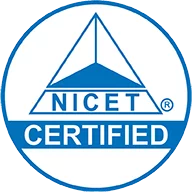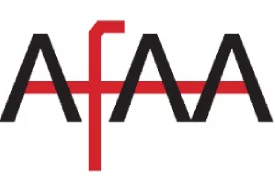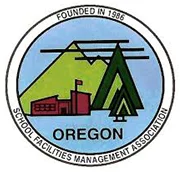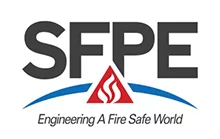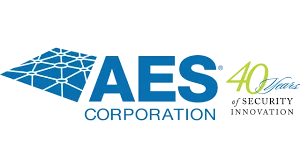The Ultimate Guide to Fire Extinguishers
Approximately 1.3 million building fires break out across the United States each year, according to data from the US Fire Administration. In 2018, structure fires caused roughly 3,700 civilian deaths, 15,000 civilian injuries, and $25.6 billion in direct property damage.
Every residential and commercial building should be equipped with fire extinguishers. After all, this equipment allows building occupants to act swiftly and effectively if a fire breaks out. As long as the extinguisher is in good working order and the person wielding it knows what to do, extinguishers can prevent property damage and save lives.
In this ultimate guide to fire extinguishers, you will learn:
- Which type of fire extinguishers are effective against different kinds of fires
- How to use a fire extinguisher
- The importance of maintaining your fire extinguishers and the recommended schedule you should follow
If you have any questions about selecting, using, or maintaining fire extinguishers for your home or business, please call Fire King of Seattle at (206) 763-4177, or dial (253) 896-5117 to reach our Milton location.
Types of Fire Extinguishers
Handheld fire extinguishers are intended to control small fires in emergency situations. The type you should install depends on the fire hazards that exist in your building.
Fires are categorized by class. These include:
- Class A fires – Ordinary combustibles (paper, wood, cloth)
- Class B fires – Flammable liquid (grease, gasoline, oil)
- Class C fires – Electrical equipment (appliances, tools, wiring)
- Class D fires – Combustible metals (titanium, zirconium, magnesium)
- Class K fires – Cooking oils found in kitchens (vegetable oil, animal fat, grease)
Regardless of its class, fire needs four elements to burn: fuel, heat, oxygen, and a chain reaction. Different extinguishing agents are designed to remove one or more of these elements to stop the fire in its tracks.
Here are some of the most common fire extinguishers in use today:
- ABC dry chemical fire extinguishers – Multipurpose use against Class A, B, and C fires
- Carbon dioxide fire extinguishers – White CO2 “snow” smothers Class B and C fires
- Wet chemical fire extinguishers – Most often used in restaurants and other buildings with cooking areas
- Water-based fire extinguishers – Only appropriate for Class A fires (water mist extinguishers are also suitable for Class C fires)
- Foam fire extinguishers – Suitable for Class A, B, and D fires
- Clean agent or halogen fire extinguishers – Gaseous fire suppression, commonly used in buildings with sensitive electronics where no residue is desired
- Dry powder fire extinguishers – Uses a powder to separate oxygen from the fuel source in Class D fires
- Purple K fire extinguishers – Highly effective against Class B and C fires
These are only a few examples of the extinguishing equipment available today. If you’re unsure what type of fire extinguisher you should install, contact Fire King of Seattle for advice.
How to Use a Fire Extinguisher
Before learning how to use an extinguisher, consider when it’s appropriate to fight a fire and when it’s better to evacuate. Ask yourself these questions:
- Have I alerted others in the building about the fire?
- Have I or someone else called the fire department?
- Is the fire small or contained to a single object, such as a wastebasket?
- Am I safe from the fire’s toxic smoke?
- Do I have a clear escape route if I decide to evacuate instead?
- Am I physically able to use a fire extinguisher?
If you can’t answer “yes” to all of these questions, don’t put your life at risk—evacuate the building and call 911.
If you decide to use a fire extinguisher, remember to PASS:
- PULL out the safety pin to release the locking mechanism.
- AIM the nozzle at the base of the fire.
- SQUEEZE the lever to discharge the extinguishing agent slowly and evenly.
- SWEEP the nozzle from side to side until the fire goes out. Remain watchful in case of reignition.
The Importance of Fire Extinguisher Inspections & Maintenance
Fire extinguishers require routine maintenance for safety and code compliance. After all, a neglected extinguisher may malfunction or lack sufficient charge to fully extinguish a blaze. An extinguisher also doesn’t do any good if people don’t know where it is. Regularly inspecting your extinguishers gives you a chance to correct problems, replace defective cylinders, and ensure code compliance.
The National Fire Protection Association requires fire extinguishers to be maintained on the following schedule:
- Monthly visual inspections
- Annual maintenance and testing
- Five-year hydrostatic testing for carbon dioxide and water-based extinguishers
- Six-year standardized maintenance for stored-pressure extinguishers
- 12-year hydrostatic testing for stored-pressure and cartridge-operated extinguishers
You can conduct monthly visual inspections without the assistance of a safety technician. Here’s what to do:
- Make sure all fire extinguishers in the building are accounted for.
- Determine that each fire extinguisher is mounted between 3.5 to 5 feet from the floor for universal accessibility. The cylinder should be clearly visible with no obstructions blocking its access. All identification signage should be accurate and easy to read. For dusty or outdoor installations, store the extinguisher in a breakable glass case.
- Check that the label is legible and identifies the extinguisher correctly.
- Ensure that the safety pin is in place and appears functional.
- Check the handle. It should be intact and have an unbroken tamper seal.
- Read the pressure gauge. The arrow should point to the green, indicating a full charge. Be aware that some extinguishers don’t have gauges. In the case of cartridge-operated extinguishers, a depressed indicator shows that the cylinder is ready for use. Then, CO2 extinguishers must be weighed to find out if they’re full.
- Make sure the discharge hose and nozzle are not clogged, cracked, or broken.
- Inspect the shell for damage or corrosion.
- For dry extinguishers, turned the cylinder upside down to fluff the powder inside.
- Look for a valid maintenance tag. It should indicate the most recent annual maintenance and hydrostatic testing dates.
- Upon completing the above steps, initial and date the maintenance tag. If you come across any defective fire extinguishers during your inspection, order replacements as soon as possible.
If you notice that the last annual maintenance visit was over a year ago, call Fire King to schedule your next professional fire extinguisher inspection.
Schedule Fire Extinguisher Services in Seattle
With over 35 years of experience, Fire King of Seattle has become a fire safety expert. We offer fire extinguisher products and services designed to meet all applicable fire codes and keep your business or residence safe from potential fire hazards.
For help selecting new fire extinguishers, or to schedule services for your existing cylinders, please contact Fire King at (206) 763-4177 if you live in Seattle, or call (253) 896-5117 to reach our Milton office.




